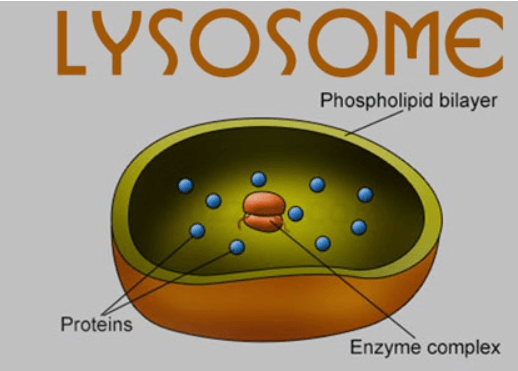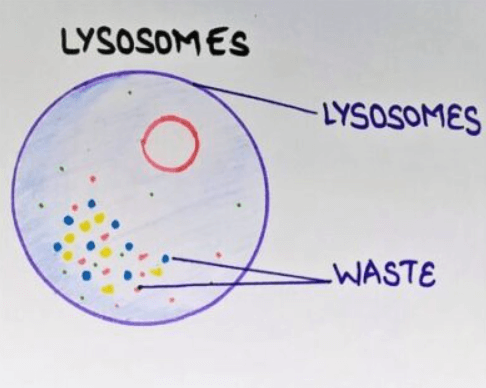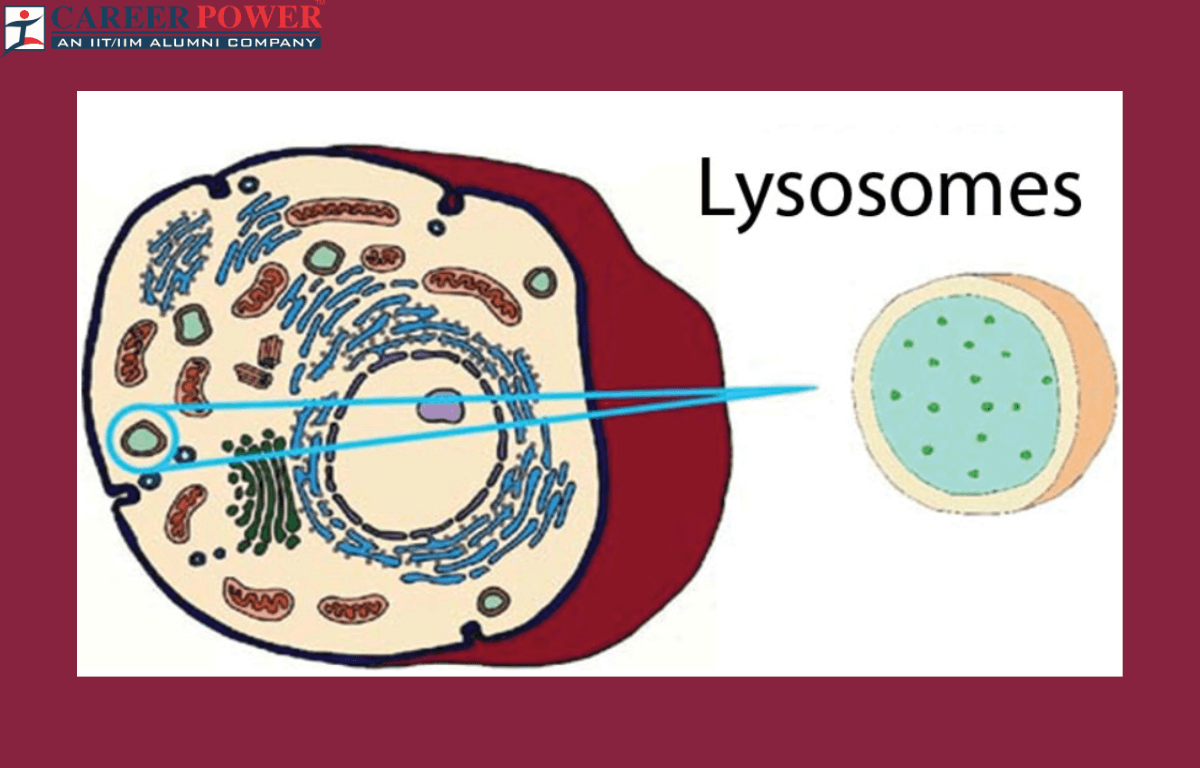Define Lysosomes
Lysosomes are like the recycling centers of a Cell. Picture them as tiny, specialized sacs filled with enzymes, the cell’s own recycling workers. Their primary job is to break down and recycle waste materials. When old or damaged cell parts, foreign invaders, or worn-out molecules need to be disposed of, lysosomes step in. These enzyme-filled sacs act like digestive bags, breaking down large molecules into smaller components that the cell can reuse. This process is crucial for maintaining a healthy and well-functioning cell. Lysosomes also play a vital role in defending the cell by engulfing and digesting harmful bacteria or viruses.

In a way, lysosomes contribute to the cell’s overall cleanliness and health by efficiently managing waste and providing a dense mechanism. Think of them as the cellular clean-up crew, ensuring that the cell stays tidy and functions properly. Without lysosomes, the cell would struggle to eliminate waste and maintain its internal balance.
Lysosome Diagram
A lysosome diagram depicts small structures within cells that act like recycling centers. Think of them as tiny trash disposals. The diagram shows lysosomes breaking down old or damaged cell parts and turning them into reusable materials. It’s like a cell’s own recycling plants, keeping things tidy and making sure waste gets reused. Lysosomes also help fight off invaders, acting as the cell’s defense force. In simpler terms, the diagram illustrates how lysosomes play a vital role in cleaning up, recycling, and protecting the cell, ensuring everything runs smoothly in the microscopic world inside our bodies.

Structure of Lysosomes
Lysosomes are cellular organelles enclosed by a lipid bilayer membrane, maintaining an acidic environment. Their spherical structure houses hydrolytic enzymes, such as proteases and lipids, crucial for intracellular Digestion. This acidic setting activates the enzymes, allowing lysosomes to break down various cellular components, including waste, damaged organelles, and engulfing particles. The membrane protects the cell from self-digestion by isolating these potent enzymes. Lysosomes play a pivotal role in cellular homeostasis, recycling materials for reuse and contributing to processes like autophagy. Dysfunction in lysosomal activity can lead to various disorders, emphasizing the significance of their well-structured and regulated function within the cell.
| Different Components of Lysosomes | |
| Components | Description |
| Membrane | Membrane is a phospholipid bilayer enclosing contents |
| Enzymes | Hydrolytic enzymes for digestion |
| Acidic Environment | Maintains low pH for enzyme activity. |
| Transport Proteins | Facilitate movement of molecules. |
| Vesicle Formation | Fusion with endosomes or phagosomes. |
Membrane
The membrane of lysosomes is like a protective barrier around a tiny cellular recycling center. Composed of lipids, it acts as a boundary, enclosing powerful digestive enzymes within. This membrane ensures that the enzymes stay contained, preventing them from harming the rest of the cell. Think of it as a security wall, allowing controlled digestion of cellular waste and overall integrity and safety of the cell’s surroundings.
Enzymes
Enzymes are like tiny, specialized workers in the bustling factory of our cells. These protein molecules act as biological catalysts, speeding up chemical reactions necessary for life. Picture them as skilled laborers that facilitate processes like breaking down food for energy or building essential molecules. Each enzyme has a specific job, fitting like a key into a lock with its target molecule. Without these efficient workers, vital cellular tasks would happen too slowly, hindering the functioning of the entire biological system.
Acidic Environment
The acidic environment of lysosomes is akin to a special chamber within our cells that mimics the acidity of a lemon. This low pH setting, maintained by the lysosomal membrane, is crucial for the work of digestive enzymes. Think of it as the right acidic recipe for these enzymes to perform their tasks – breaking down cellular waste, old components, or engulfed invaders. This acidic touch ensures optimal conditions, enhancing the efficiency of the enzyme and contributing to the cell’s overall cleanliness and functionality.
Transport Proteins
Transport proteins in lysosomes are like diligent couries ensuring materials reach the right cellular destination. Embedded in the lysosomal membrane, these proteins act as gatekeepers, facilitating the entry and exit of substances. They help move molecules in and out of the lysosome, allowing for proper recycling and digestion. Imagine them as cellular traffic directors, ensuring a smooth flow of materials to support the cell’s functions. These proteins play a crucial role in maintaining the balance of substances within the lysosome, contributing to the cell’s overall well-being.
Vesicle Formation
Vesicle formation in lysosomes is like packaging material for cellular shipments. Lysosomes merge with other cellular structures, such as endosomes or phagosomes, creating small, bubble-like vesicles. This process helps transport substances within the cell. Enzymes from the lysosomes can digest materials within these vesicles. Picture it as lysosomes collaborating with other cellular compartments, enclosing specific cargo in tiny parcels for delivery. This vesicle formation is a crucial part of the cell’s logistics, ensuring the efficient movement and processing of various substances.
Functions of Lysosomes
Lysosomes, the cell’s recycling centers, perform vital functions. These functions highlight the crucial role lysosomes play in maintaining cellular health and functionality. Here we have discussed a few points that highlight the functions of lysosomes.
- Digestion: Break down macromolecules (proteins, carbohydrates, lipids) into smaller components.
- Cellular Waste Management: Eliminate cellular debris, damaged organelles, or engulfed particles through a process called autophagy.
- Recycling: Reuse the breakdown products from digestion to synthesize new molecules or generate energy.
- Apoptosis: Contribute to programmed cell death by releasing enzymes that lead to cell dismantling.
- Defense Against Pathogens: Fuse with phagosomes containing ingested pathogens, aiding in their destruction.
- Maintenance of Cellular Homeostasis: Participate in maintaining the internal environment of the cell by regulating nutrient availability.



 50 Vegetables Name for Kids in English a...
50 Vegetables Name for Kids in English a...
 Food Chain: Definition, Types, Examples,...
Food Chain: Definition, Types, Examples,...
 Human Respiratory System: Definition, Di...
Human Respiratory System: Definition, Di...













